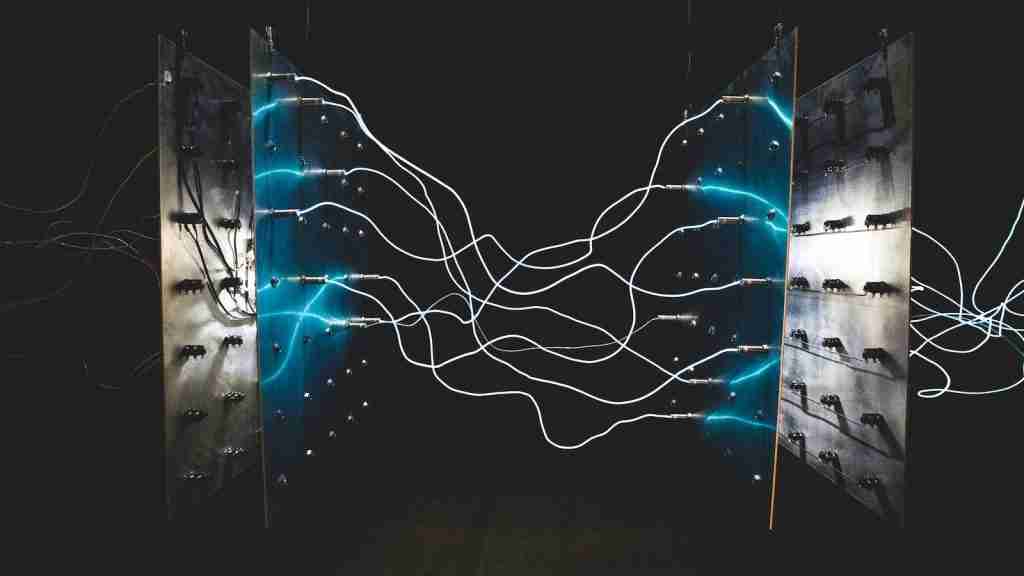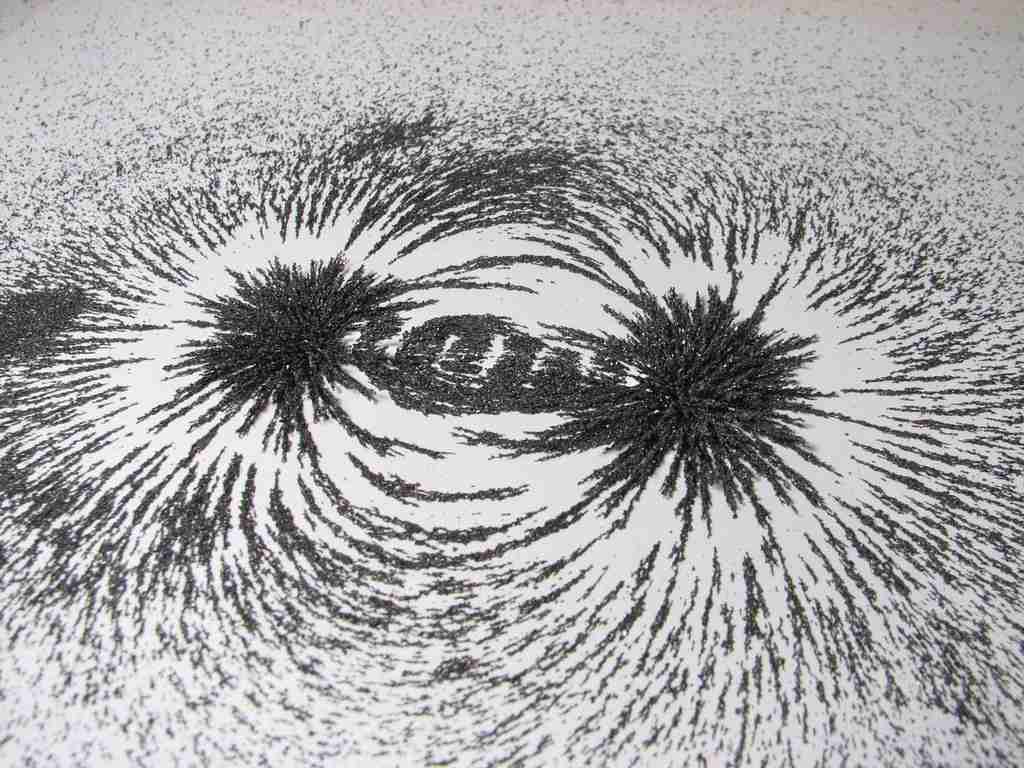25 Fun Facts About Magnetism: Unveiling Mind-Blowing Secrets
1. The word “magnet” comes from the Greek word “magnetis,” which means “of the region of Magnesia.”
The word “magnet” has its roots in the ancient Greek city of Magnesia. The term, “magnetis,” directly translates to mean “of the region of Magnesia.”
This city, not only was it historically renowned as home to one of Hippocrates’ oldest temples to health & healing, but citizens of Magnesia were also the first to discover naturally occurring lode stones.
These pieces of iron ore hold their own magnetic power and served as a foundation for deep exploration into magnetism during antiquity.
2. The Earth itself is a giant magnet.
The Earth is a unique celestial body that harbors an immense planetary magnet, producing an impressive magnetic field.
This pervasive and awe-inspiring force originates in the Earth’s core and is actually aligned with the planet’s rotational axis.
It bears noting that this highly complex and powerful electromagnetism isn’t something crafted by mankind; rather, its generation is present within the outer layers of molten iron that surround our world’s central molten core.
3. Magnetism can be used to generate electricity.

Harness Earth’s Magnetic Field.
Magnetism: an invisible force that unlocks electricity’s door. It’s one of the foundations of the infrastructure we rely on today.
This invisible force takes many forms, but what do you do when you want to capture it and make it useful? The answer is in the power of electricity generators.
Generators in power plants use large magnets that spin on a steam turbine, generating a helpful surge of electricity. This process is the principle behind how magnetism can be effectively used to generate electricity, powerful enough to help us fulfill our vital energy needs.
4. Some animals, such as migratory birds, sea turtles, and salmon, can sense the Earth’s magnetic field and use it to navigate.
Migratory birds, sea turtles, and salmon possess a captivating superpower — the ability to sense the magnetic field of the Earth. Magnetoreception is what we call this phenomenon; it gives these creatures an exquisite capacity for direction-finding.
The strength of their intuition continues to astound us as they make their remarkable journeys across expansive terrain.
Whether navigating to destinations thousands of miles away or over unfamiliar territory, they travel with incredible genetic clarity that allows them to stay on course unfailingly. It’s a tremendous capability possessed by very few animals when compared to the rest of living life.
5. The human body also interacts with magnetic fields.
Amazingly, the human body is capable of interacting with magnetic fields. Iron, found in our blood as the oxygen-binding protein hemoglobin, makes us weakly magnetic.
This ability enables Magnetic Resonance Imaging (MRI) scans to create detailed images of the body’s interior.
MRI uses magnetic fields and radio waves in unison to upload a three-dimensional portrait of internal anatomy never seen before.
6. The polarities of a magnet can be determined with the help of a compass.
Do you ever wonder how the poles of a magnet can be detected? Look no further! With the help of a compass, these north and south poles can be easily determined.
One of the fun facts about Magnetism is that the north pole of a magnet will push away from the north pole on the compass needle, as magnetic forces move in opposite directions. In contrast, the south pole on both objects will be drawn to one another due to similar polarities.
To your surprise, detecting polarity isn’t always an arduous task.
7. Opposite poles of magnets are attracted to each other, while the same poles repel each other.

Opposites, Repulsion for Likes.
Magnets come with two different kinds of poles: opposite poles and the same poles. Opposite poles of a magnet are strongly attracted to each other, while the same poles repel away from one another.
This phenomenon has been observed for centuries and is known as the law of polar orientation.
It serves as the foundation for devices, engines, computers, medical equipment, and a whole range of other technologies that use magnets in some capacity.
8. Magnetic levitation (Maglev) trains are a transportation technology that uses magnets to levitate the train above the tracks.
Magnetic levitation (Maglev) trains are changing the game in terms of transportation technology. With magnets employed strategically, the train is lifted and suspended above the tracks.
This cutting-edge concept eliminates friction and thereby permits the train to travel at extremely high velocities without tipping over or slipping off course.
The absence of contact between the train’s underside and the track itself significantly reduces energy usage, eliminating environmental hazards associated with less efficient, conventional forms of rail transport.
9. The First magnetic compass was invented by the Chinese in the Han dynasty (about 200 BCE).
In the Han dynasty, around 200 BCE, the Chinese made history as they invented the first magnetic compass.
Breaking boundaries with their creativity and intelligence, this amazing tool had multiple applications: initially, it was utilized as an instrument used for divining fortunes and interpreting dreams while much later it found significant usage in aiding the navigation of ships out at sea.
By combining geographical knowledge with magical understandings of magnetism and directional affinity, the magnetic compass became a reliable mode to determine destinations.
A tool so significantly transcendent of its age, it advanced earth science well into the tenuous future we inhabit today.
10. The Ancient Greek philosopher Thales of Miletus observed that Lodestones had the ability to attract iron and other magnets as early as 600 BCE.
It’s estimated that the ancient Greek philosopher Thales of Miletus — born in the city of Miletus circa 624 BCE — noticed an extraordinary phenomenon during his lifetime.
As early as 600 BCE, he witnessed metals quite remarkable in their magnetic prowess: that of lodestones which appeared to possess a seemingly impossible ability to draw upon other magnets– like iron – and pull them within their grasp.
What must have initially captured his attention quickly offered itself up as a curiously wondrous investigation opportunity which is one of the fun facts about Magnetism.
11. The Study of Magnetism is known as Magnetics.
People are fascinated by the phenomenon behind magnets and study its effects under the term “magnetics.” Research on magnetics explores magnetic fields.
Scientists learn about their behavior as well as the forces and energy generated when two opposite poles meet. Many innovations have already been discovered through this research, such as magnetic storage devices, electric motors, and more.
Through examination of known theories and principles in magnetism yields result critical to space travel, weapon propulsion, solar electric power generation, satellite communication systems, and navigation tools. Indeed, mastering our understanding of magnetics is essential to technological development!
12. Scientists have discovered the magnetic fields of some planets.
Scientists have made an astonishing discovery about the strong magnetic fields of select planets, such as Jupiter. Unlike Earth, these planetary bodies’ magnetism is much more potent.
This remarkable finding has sparked curiosity among experts who are eager to learn more about this force and its implications for life in our solar system.
They speculate that it may play a crucial role in protecting life on the planet from harmful radiation while simultaneously preserving precious gases within the atmosphere.
Researchers intend to run further tests and excavate deeper into this fascinating phenomenon in the coming months.
13. The First successful electric motor was built by Michael Faraday in 1821.
Michael Faraday revolutionized the electricity industry when he created the first successful electric motor in 1821.
Utilizing the power of electromagnetic principles, this revolutionary electric motor was engineered to convert electrical energy into mechanical energy.
Faraday’s discovery opened up a realm of possibilities– from powering factories to nonrenewable resources.
Since this breakthrough a century and a half ago, electricity continues to develop and create energy for our ever-changing world.
14. Iron, cobalt, nickel, and some alloys are known as ferromagnetic materials.
Iron, cobalt, nickel, and several alloys display characteristics that make them unique in the field of magnetism.
Known as ferromagnetic materials, these substances can be easily magnetized and possess a particularly strong magnetic field.
This means that such materials are highly useful when creating powerful magnets for various applications, as well as for research involving electromagnetism and more.
Additionally, ferromagnetic materials serve to expand the capabilities of industrial magnet production whilst broadening scientists’ insight into the fascinating realm of mysticism.
15. Electric current flowing through a wire creates a magnetic field around the wire.
One of the fun facts about Magnetism is that electricity plays an important role in the world we live in. When electricity flows through a wire, it generates a magnetic field that surrounds the wire.
This magnetic field is evidence of the power of electricity to create change and movement. It’s fascinating to watch an electric current move—you can almost see it creating a magnetism that permeates around the wire.
It’s almost as if electricity can physically manifest itself into this form at times, depending on what kind of materials it is traveling through.
Scientists are continually exploring how electric currents interact with other substances and discovering more about how this phenomenon works in real-life applications and theories.
16. The Earth’s Magnetic field is stronger at the poles and weaker at the Equator.

Earth’s Magnetic Field Variation
The Earth’s magnetism has a remarkable variance between its poles and equator. At the Poles, the field is significantly stronger than elsewhere, whereas at the equator it noticeably weakens.
Magnets demonstrate this changing of intensity really well — placing them near either pole produces intense magnetic attraction while rotating the device along a circumference surrounding the planet demonstrates weakening over time.
This displays the varying power levels across geographical coordinates on our globe!
17. A Material can be both Magnetic and Electrical at the same time. They are called magnetoelectric materials.
Material can exist in a fascinating combination; both magnetic and electrical.
These special materials come with dual properties, displaying the most wondrous of both qualities. They have been dubbed “magnetoelectric materials”.
Every material has its own unique set of attributes and magnetoelectric materials are no exception, stretching the boundary for what is possible for the possibilities in this new exciting field.
18. A magnet can affect the flow of electricity in a wire.
Magnets exert a force of attraction as well as a push and pull. This magnetic force impacts the flow of electricity in a wire, a phenomenon known as electromagnetic induction.
This same principle then helps generate power or heat and also converts an electrical current from one voltage to another; processes which are typically seen in the likes of generators and transformers.
Its importance is far-reaching since it allows us to use lower-level currents over large distances with ease – an important factor in daily life applications.
19. The First electric generator was built by Michael Faraday in 1831.
The illustrious Michael Faraday was the inventor of the first electric generator in 1831.
While not a blazing-fast revolution, there was some speculation at the time that Faraday had changed the progress of science and technology by creating this groundbreaking new invention.
His success came from having a scientific firm understanding of Halloran’s Principle of Electromagnetic Induction.
This principle laid out the mathematical and natural laws which govern electricity generation—laws that underpin modern electrical technology even after almost two centuries of advance, which is one of the fun facts about Magnetism.
20. The Earth’s magnetic field changes over time, sometimes even flipping, the north pole becomes south and vice versa.

Shifting Magnetic Identity.
Our planet’s magnetic field is not a static force. While it generally remains constant over long periods of time, there are moments when it changes. At times, the Earth’s north and south poles switch places.
This means that what was once south may eventually become north, and vice versa. Our magnetic field has shifted multiple times in the past, and although there aren’t human witnesses to the process.
Geologists base assumptions about these shifts based on their study of ancient sedimentary rocks containing fossils from years gone by. Such reversals take anywhere from 10,000-20,000 years to complete!
21. The most powerful magnets in the world are superconducting magnets.
Superconducting magnets are the most powerful in the world.
They can generate magnetic field orders of magnitudes stronger than what we might find at home with a refrigerator magnet – reaching up to 45 Tesla.
That said, your average domestic fridge magnet churns out a manageable 0.01 Tesla!
22. One of the practical applications of magnetism is its use in credit card stripes or MRZ(Machine Readable Zone) on passports as it can store data in a magnetic form.
Magnetism has some very practical applications today: one of these is its use in preventing credit card fraud. Encoded data is stored in a strip or band at the back of your credit cards, usually made out of magnets.
It is also used to store digital information in Machine Readable Zones located on passports, allowing airport scanners the ability to quickly and accurately read someone’s information.
With its range of applications, magnetism proves to be a helpful tool to protect our sensitive financial and personal data, which is one of fun facts about Magnetism.
23. The Use of Magnetic Fields to treat illnesses is known as Magnetotherapy.
Magnetotherapy is a form of treatment that has been around for centuries. It harnesses the power of magnetic fields to tackle a variety of illnesses and disorders, from pain management to wound healing.
Amazingly, our own bodies are filled with powerful magnets – iron from hemoglobin in our red blood cells – and contain electric currents, which create a strong affinity between ourselves and the magnetic fields used in magnetotherapy.
This means that we can make direct use of this healing resource without any painful side effects. In fact, many patients who have undergone treatment report improved sleep quality and decreased stress levels after just one session of magnetotherapy!
24. A magnet can be demagnetized by heating it, hitting it with a hammer, or exposing it to a strong magnetic field.

hammer, or magnetic force.
A magnet’s natural magnetic force isn’t indestructible; it can be weakened or eliminated through a few means. Most notably, heat can be used to facilitate the demagnetizing process.
Mechanical shock, such as a whack from a hammer, also has an injurious effect on a magnet’s properties.
Even without physical contact, significant exposure to another powerful magnet can influence the demagnetizing powers at play.
25. The First magnetic tape was developed in Germany in the 1930s.
One of the fun facts about Magnetism is that in the 1930s, Germany experienced a digital revolution with the development of magnetic tape. This revolutionary tool enabled sound to be recorded and played back for the first time ever.
As such, magnetic tape opened up new worlds in audio recording and playback that had never been seen before. It ushered in an age where digital versions of music and other sounds were easily stored and quickly accessible.
Magnetic tape allowed music producers, Sound engineers, and spoken word recorders alike to leverage this new technology to capture sound waves with ease. In essence, it truly revolutionized how audio could be captured, shared, and enjoyed by everyone.







